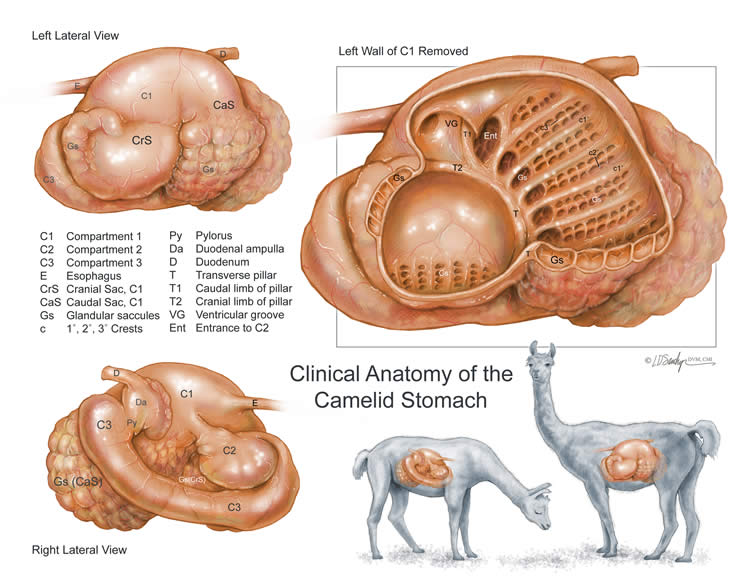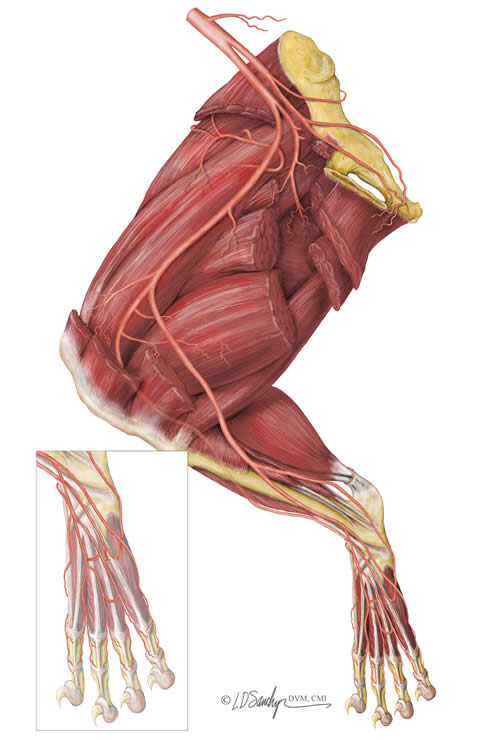Alum pioneers the field of veterinary medical illustration
 Many budding artists push their passions aside when it’s time to build a career. But Dr. Lauren Sawchyn ’09 managed to merge her interests in veterinary medicine and art, pursuing a dual career as both a veterinarian and a board-certified medical illustrator, practicing medicine while running her own illustration business, Sawchyn Medical Illustration (www.sawchynmi.com), in the greater Boston area.
Many budding artists push their passions aside when it’s time to build a career. But Dr. Lauren Sawchyn ’09 managed to merge her interests in veterinary medicine and art, pursuing a dual career as both a veterinarian and a board-certified medical illustrator, practicing medicine while running her own illustration business, Sawchyn Medical Illustration (www.sawchynmi.com), in the greater Boston area.
A native of southwestern Conn., Sawchyn grew up immersed in veterinary medicine and inspired to pursue the field by her mother, a certified veterinary technician who worked her way up to manage an entire practice.
“When I was seven, my mother gave me a copy of the Hill's Atlas of Veterinary Clinical Anatomy,” said Sawchyn. “I was fascinated by the artwork and the animal diseases represented. Years later, after becoming a medical illustrator myself, I met some of the illustrators who created the Hill’s Atlas that had so inspired me.”
Sawchyn did her undergraduate studies in zoology and studio arts at the University of Maine, spending long hours in the studios followed by more hours in science labs. When a veterinarian she worked for gave her a first edition Miller's Anatomy of the Dog, she became enamored with anatomy and pathology. Finally, taking a class on the history of veterinary medicine exposed her to veterinary medical illustrations that captivated her aspirations.
“These old detailed pictures were amazing and still communicated the story hundreds of years after they were made,” said Sawchyn. “I knew I wanted to be a veterinarian, but after seeing those pictures I realized I wanted to merge that interest with art in my career. So before veterinary school, I decided to pursue a medical illustration degree.”
 Sawchyn attended Georgia Regents University to obtain an M.S. in medical illustration. Most of the program focused on human medicine, so Sawchyn took human-focused courses such as anatomy and pathology along with medical students. Unique among her peers in her focus in veterinary medicine, she forged her own path toward this specialty by creating her own veterinary projects as well as shadowing a lab animal veterinarian at the college.
Sawchyn attended Georgia Regents University to obtain an M.S. in medical illustration. Most of the program focused on human medicine, so Sawchyn took human-focused courses such as anatomy and pathology along with medical students. Unique among her peers in her focus in veterinary medicine, she forged her own path toward this specialty by creating her own veterinary projects as well as shadowing a lab animal veterinarian at the college.
After her masters, her knowledge deepened considerably when she began studying veterinary medicine at Cornell. She worked with several professors on illustration projects, including doing carnivore illustrations for Paul Maza’s carnivore anatomy class, for which she became a TA and used her illustrations to help teach. In 2009, the year she graduated from Cornell, she became board-certified in medical illustration, a rigorous process requiring oral, written, and portfolio exams.
Sawchyn practiced veterinary medicine full time in the practice her mother manages in Conn. for the last several years. She recently moved to Mass., where she is transitioning to practicing part-time as she builds her business, which provides medical illustration and fine art services for biomedical fields, specializing in veterinary medicine.
She is the first veterinarian to serve on the Board for Certification of Medical Illustrators and is also a professional member of the American Veterinary Medical Association, Association of Medical Illustrators, the Guild of Natural Science Illustrators, and the American Association of Veterinary Anatomists.
“It’s been a fascinating ride combining these fields,” said Sawchyn. “I’m not the only veterinarian who draws, but I’m one of only a few who have graduate training at this level. It’s important to realize that not all artists are the same, and not all ‘medical’ artists who claim to be really are. Any one can draw a pretty picture – a medical illustrator knows how to research to make it accurate and understandable. They are ‘multi-lingual’ problem solvers. There are about 2,000 medical illustrators in the world, a fraction of whom are board-certified. I’m working with students interested in the vet specialty who are coming up the ranks. I’ve given lectures at illustrators’ conferences, and have started working with other veterinary associations to build partnerships with the illustration field. My ultimate goal is to be a bridge between the two worlds.”




